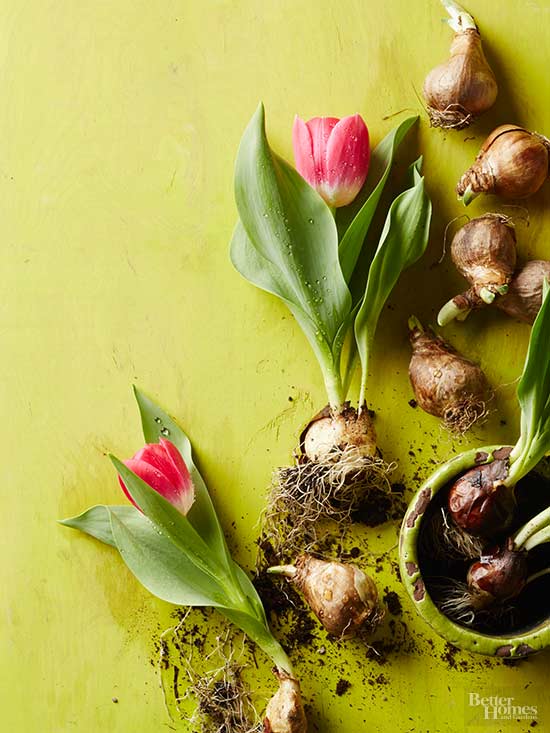






It's almost counterintuitive, isn't it? We think about planting bulbs when we see the colorful tulip flowers blooming in spring. But in order to bloom, tulip bulbs need a chilling period of about 12 to 14 weeks at 55 degrees F or less.
In northern climates -- Zones 7 and colder -- this means planting tulips in the fall -- but not too early or they might start growing prematurely. They prefer to set new roots in cool soil, usually 32 to 55 degrees F. Plant tulips any time before the ground freezes in winter.
In southern climates -- Zones 8 and warmer -- you must trick tulips into blooming. Buy prechilled tulip bulbs or buy bulbs you can chill yourselves. To chill tulip bulbs for planting, keep them in a paper or mesh bag in a refrigerator for the required number of weeks but keep them away from all fruit, especially apples, which emit ethylene gas that damages tulip bulbs.
continue reading belowThe ancestors of today's modern tulip bulbs are native to the Middle East. Keep those conditions in mind when planting tulip bulbs. They do best in a full-sun location where the soil is well-drained and loose.
If you expect tulips to rebloom, choose a garden bed or soil that won't be kept constantly watered throughout the rest of the summer. If the bulbs stand in soil kept wet thanks to a watering system, they are apt to rot.
Planting in full sun -- at least six to eight hours a day -- also helps tulip foliage to pump nutrients back into the bulb after flowering. Keep the foliage intact until it completely dies down to give your tulip bulbs the best change of regenerating until the following year. If you dislike the look of the browning foliage, try planting tulips among perennials whose emerging foliage will hide the dying tulips.
Experts recommend planting tulip bulbs deeper to produce better flowers. In general, spring bulbs should be planted at a depth of three to times their height. For most tulips, plant about 8 inches deep and 3 to 4 inches apart, moving the distance closer or farther, depending on the bulb size.
There are two approaches to planting but the most design friendly strategy is to dig a hole where you can plant multiple tulips in a cluster. Dig the hole, toss in some time-release 10-10-10 all-purpose fertilizer according to application directions, and place the bulb with the root side down.
Confused about which end to place down? The wider, flatter side is where tulip roots emerge. The tulip flower stem and leaves come from the pointed nose, which should face upward.
Cover the hole and bulbs with soil and water thoroughly.
Experts recommend planting tulip bulbs deeper to produce better flowers. In general, spring bulbs should be planted at a depth of three times their height. For most tulips, plant about 8 inches deep and 3 to 4 inches apart, moving the distance closer or farther, depending on the bulb size.
There are two approaches to planting, but the most design-friendly strategy is to dig a hole where you can plant multiple tulips in a cluster. Dig the hole; toss in some time-release 10-10-10 all-purpose fertilizer, according to application directions; and place the bulb with the root side down.
Confused about which end to place down? The wider, flatter side is where tulip roots emerge. The tulip flower stem and leaves come from the pointed nose, which should face upward.
Cover the hole and bulbs with soil and water thoroughly.
If you grow tulips in an area filled with deer, protect them with a mesh fence. Tulips are like a tasty salad bar for deer and other critters!
Many of today's tulips are bred to give a tremendous first-season floral show but slow down after one or two more years. For tulips that reliably return and rebloom, choose species tulips. These types, including Tulipa fosteriana, T. greggii, and T. kaufmanniana, are often early and short but some even sport striped foliage.
For more ideas on how to grow tulips:
Top Tulips That Come Back Every Year
10 Tips for Protecting Tulip Bulbs
25 Best Tulips for Your Garden
Grow Great Tulips
Copyright © www.100flowers.win Botanic Garden All Rights Reserved